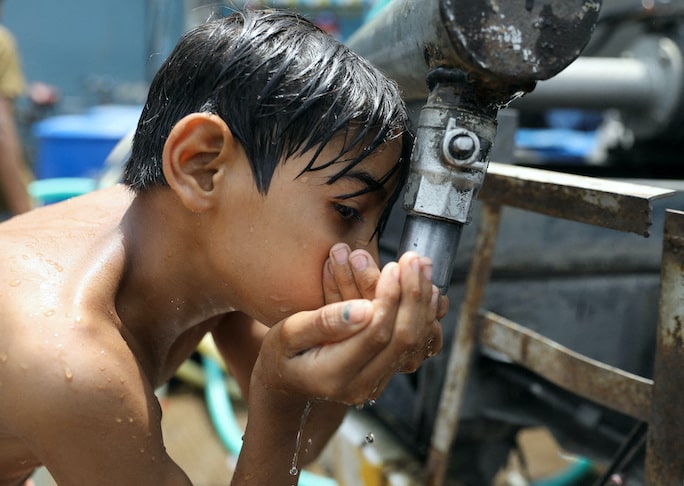UNICEF has said that it is deeply concrened about the health and safety of babies and young children caused as a result of severe heatwave that has been engulfing several countries in South Asia. The rising temperatures, that is predicted to reach up to 47°C, pose significant risks to millions of children who are more vulnerable to heat-related illnesses. The Indian Meteorological Department and Pakistan’s Meteorological Department have issued warnings of extreme danger, prompting urgent measures to safeguard the young and vulnerable populations.
Health Risks and Preventive Measures
According to UNICEF, children are at an increased risk during extreme heat events because they cannot regulate their body temperatures as well as adults. This can cause health related issues such as dehydration, heat strokes, and other severe conditions like rapid heartbeat, cramps, confusion, and even coma. In addition to this, prolonged exposure to high temperatures can adversely affect children’s brain development, potentially causing long-term cognitive issues.
In order to reduce and mitigate these risks, UNICEF has advised parents and caregivers to be vigilent about keeping children hydrated and cool. Experts have recommended use of simple measures such as using ice packs, fans, and spraying water, which can help lower body temperature. For older children, an effective strategy is cold water immersion. In addition to this, loose clothing and frequent checks for symptoms of heat stress, such as, excessive thirst, dry mouth, and dizziness, are extremely important. The organisation has urged parents to seek immediate medical attention if a child is exhibiting severe symptoms like high fever or rapid breathing.
UNICEF also emphasizes the need for health workers to be equipped to identify and treat heat stress symptoms promptly. The organization has provided guidelines to help frontline workers, families, and caregivers recognize and respond to heat-related illnesses efficiently. These steps are vital, especially in regions like South Asia, where a significant percentage of children are exposed to extreme temperatures for extended periods each year.
Broader Impact and Call to Action
The implications of rising temperatures extend beyond immediate health concerns. For pregnant women, extreme heat can result in early contractions, preterm births, and even stillbirths. Premature babies are at higher risk of death, underscoring the urgent need for protective measures. South Asia has one of the highest percentages of children exposed to extreme temperatures, with a UNICEF analysis indicating that 76% of children under 18 in the region faced extreme high temperatures in 2020. Furthermore, 28% of these children were exposed to multiple heatwaves annually.
UNICEF calls for a collective effort to protect children from the adverse effects of extreme heat. The organization’s BEAT the Heat campaign outlines critical steps:
– Be Aware
Recognize heat stress and take preventive measures.
– Easily Identify
Know the symptoms of heat-related illnesses.
– Act Immediately
Apply first-aid actions to mitigate heat stress.
– Take to a Health Facility
Ensure prompt medical attention for severe cases.
These proactive steps are crucial in safeguarding children’s health and ensuring they remain safe during extreme weather conditions. The urgency of these measures is highlighted by recent events, such as the oppressive heatwave in Bangladesh that led to the closure of primary schools, affecting 30 million children.
The 2021 Children’s Climate Risk Index (CCRI) by UNICEF identifies children in Afghanistan, Bangladesh, India, and Pakistan as being at ‘extremely high risk’ from climate change impacts. This underscores the necessity for immediate and sustained action to protect the most vulnerable from the escalating climate crisis.

